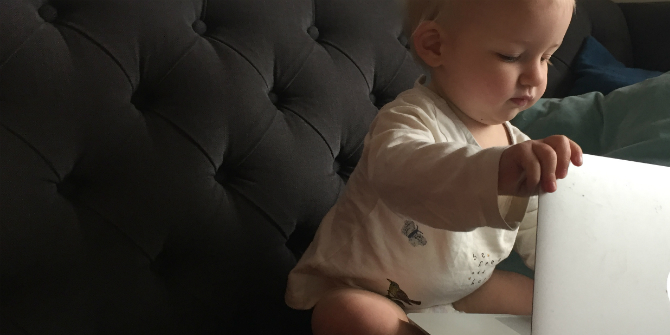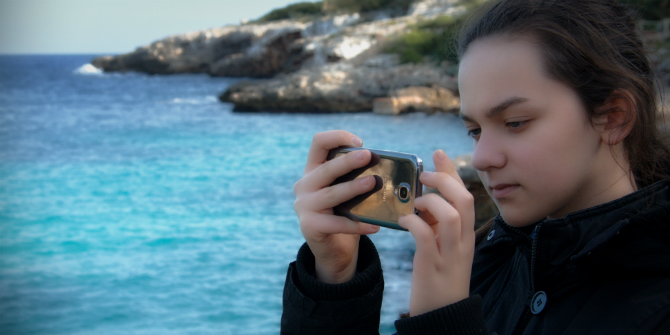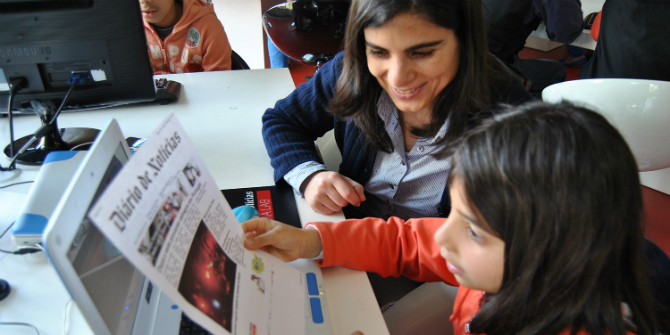 How can we protect our children from the new digital social situations that they increasingly find themselves in? Alex Harvey points out the problems with setting controls for age-appropriate content. Alex is the content manager for Yoti, a digital identity system. Interested in what technology will create in the future, he has a background in working with start-ups and technology companies. You can follow him on Twitter via @alextharv. [Header image credit: M. Koller, CC BY-NC-ND 2.0]
How can we protect our children from the new digital social situations that they increasingly find themselves in? Alex Harvey points out the problems with setting controls for age-appropriate content. Alex is the content manager for Yoti, a digital identity system. Interested in what technology will create in the future, he has a background in working with start-ups and technology companies. You can follow him on Twitter via @alextharv. [Header image credit: M. Koller, CC BY-NC-ND 2.0]
When discussing the challenges in keeping children safe online, or keeping up to date with the latest messaging platform or device, “S/he knows how to use it better than I do” is becoming a frequently heard phrase in parenting circles. Hands up how many parents have started to treat their child as their in-house IT department? Sure, there are plenty of tech-savvy people in the older generations, but the emerging picture is one where younger people are more at home with digital environments – small surprise, given that 8- to 15-year-olds are spending twice as much time on the internet than they were 10 years ago.
Keeping up with digital dangers
For children seeking to grasp some form of control in life, the digital world over which they have such easy mastery (while their most relevant authority possibly struggles) becomes the perfect medium for demonstrating their independence. And what a great place to thrive! Facts, games, videos, friends – the world at your fingertips. But while a treasure trove of opportunity, the digital world is also full of miscreants and real low lives – a platform that allows bad intentions to easily rub shoulders with the good.
Parents are able to educate about the more obvious dangers that can be compared to offline dangers: “Tell me if a stranger talks to you in the park” becomes “Tell me if someone you don’t know talks to you in the chat room”. Advice on less obvious but no less important elements such as viruses, online privacy and phishing can be discovered in modern parenting books, and are often as much use to the parent as to the child they are educating.
Failing to protect
But what about potentially damaging opportunities that arise from new digital social situations? With technology progressing at breakneck speed, these can be harder to spot, and harder still to control. Take age-restricted content, like films.
Watching films through streaming services such as Netflix and Amazon Prime is becoming the norm. At the same time, we watch films on multiple devices, from multiple locations. This means that two previously effective methods of access control immediately fail: keeping the films physically out of reach, or sending children to bed before the watershed.
Some platforms allow you to create user profiles that only allow access to certain films, but, bewilderingly, it is simple to change the user profile you are using to one that has more access. A pretty fatal flaw in the system (looking at you, Netflix).
And let’s not spend too much time analysing the fairly ridiculous ‘honour system’ in some platforms like YouTube. You know the one, where, before playing a video, you need to ‘solemnly swear’ you are 18+.
Intelligent judgement must be exercised here, depending on the nature of the content: it’s an incredibly subjective field. I, for example, grew up on a diet of Kung Fu and James Bond movies – violent, yet somehow innocent enough to escape my parents’ censorship. Perhaps if it was only this type of content that was being accessed, this issue would not be such a concern. Sadly, worse things, like sexually explicit films, are being watched by underage children: ChildLine found that one in five of nearly 700 youngsters surveyed said they had seen pornographic images that had shocked or upset them. ATVOD research found that one in 35 of children aged 6-11 had accessed pornography in a given month in 2013, rising to one in 10 of those aged 6-18. Access was particularly pronounced for teenage boys.
Offering protection but avoiding restriction
Despite our best efforts, sometimes things have a way of happening regardless. We can see that under current processes, a determined child can find their way to, and access, restricted online videos despite parents’ attempts to stop them. Whether that’s through lying about their age in honour system websites, switching user profiles, or even simply visiting a friend’s house where controls are not so stringent.
And speaking of friends, the internet being the excellent collaborative environment it is, it’s entirely possible your children and their friends work together to find ways around controls. Don’t believe us? Try searching for ‘How can I watch restricted films on YouTube’. Who do you think is reading those articles?
A cross-sector solution to age verification is needed – one that accounts for the way that platforms and locations change from moment to moment. One that forces the user to prove their age in the moments before they click ‘play’, but also does not hinder or noticeably slow down access to the content.
NOTES
An earlier version of this text was published on the Yoti Blog and has been re-posted with permission.






